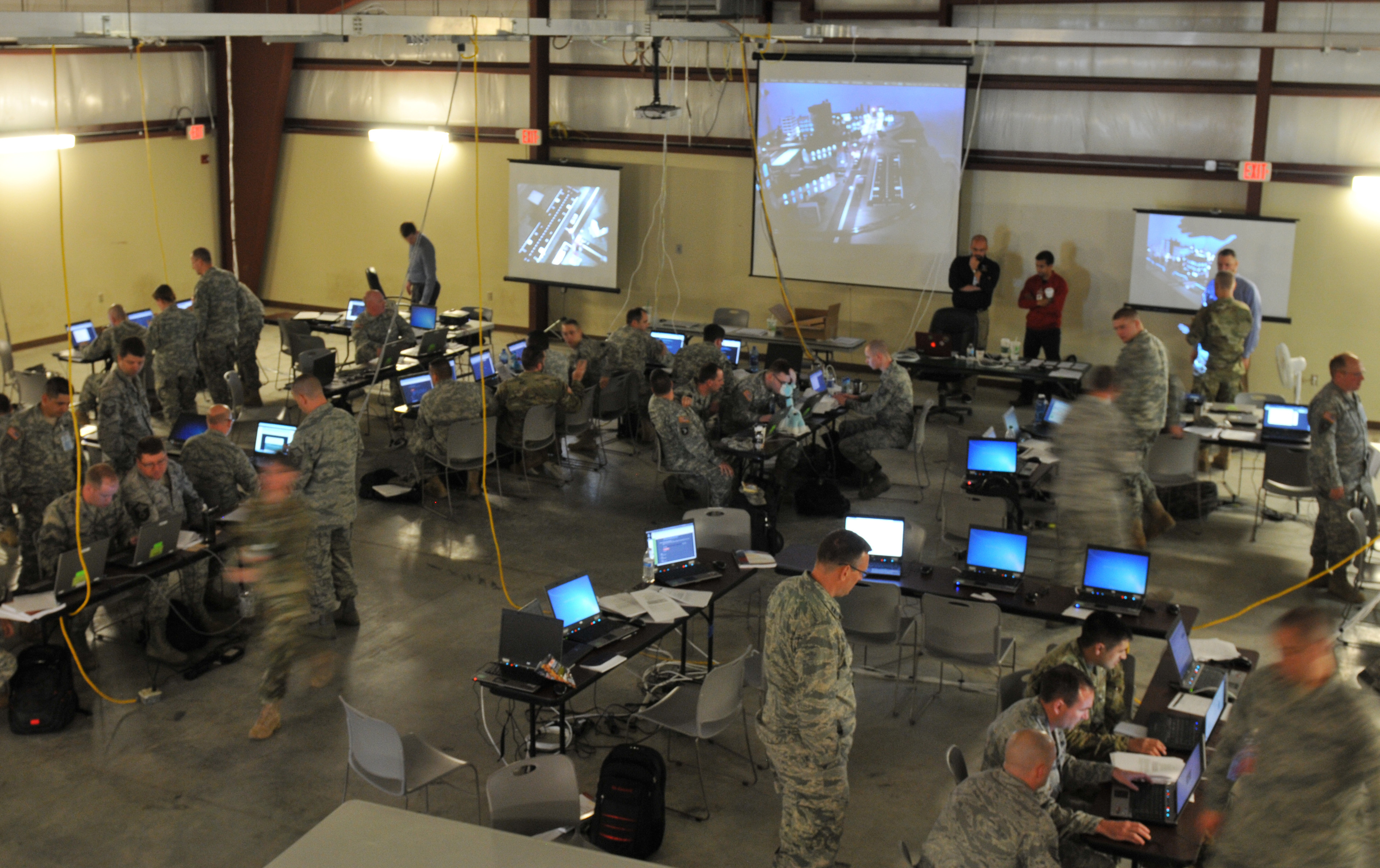Near Peer Adversary - The idea that the United States is the dominant power on the world stage, competing with and defeating its near enemies in the race for space, technology, education, economy, and other competitive advantages , is a huge vanity. fighting ability.
But where exactly does the global superpower stand in the face of competition from the immediate peers of the United States?
Near Peer Adversary
At last month's Space Innovation Summit 2021, America's Future Series Founder and CEO David Hamilton and former US Air Force and Space Force Chief Software Officer (CSO) Nicolas Chaillan opened fire around fire. The chat focuses on the theme of close peer competition.
Fighting As Intended: The Case For Austere Communications > National Defense University Press > News Article View
The lecture and discussion revolved around Chailan, who resigned last September, and his experience as a CSO. During the conference, Chailan shared his thoughts on the role of the United States as a global competitor and the changes the US government needs to make to remain a dominant force on the world stage.
Chailan has achieved many victories for the Department of Defense (DoD), including guiding the department toward a modern IT and cybersecurity infrastructure and demonstrating that the department can deploy a trustless architecture and an advanced cybersecurity stack on hardware. inherited.
But even though he won the department, Chailan couldn't get rid of the great knowledge he gained as a CSO. "We've proven time and time again that it's possible," Chailan said. "It's possible to move forward at a pace that matters to the US government. Unfortunately, what we don't see is the urgency, especially with China."
According to Chaillan, the term “enemy neighbor” should not be used in any discussion of China. "We like to call them close enemies, but I don't agree with that at all," Chaillan explained. "I would say they are leading the way in cybersecurity, as well as the adoption of artificial intelligence (AI) and machine learning (ML)."
The Future Of Combat Casualty Care: Is The Military Health System Ready?
Chailan points to the Chinese government's strict mandate on enterprise technology and manufacturing as a key factor in China's overtaking the United States in these areas. But ultimately, Chailan blames much of the blame for China's advance on the US government.
“We see the US government calming down and getting used to China,” Chaillian said. "We have to be way ahead in terms of the money we spend... We're probably making 10 cents on the dollar."
Chailan also criticized the department's current reliance on a waterfall IT approach, its rapid adoption rate, the department's "procurement nightmare," and "silos and egos." The United States is a reliable competitor on the world stage.

According to Chaillan, the whole problem for the US government is that “the rate of return on investment is so bad that it exceeds China”.
Air Force Special Operations Command (afsoc)
He used Tesla as an example to show how the US government wants to position itself to be a global competitor.
"It's great for Tesla to open up their patents because they're moving so fast that when they even remotely catch up with their competitors, they're five miles ahead." "That's exactly the role the United States should play," he explained.
Chailan thinks the United States is a bit in denial about where the country stands on the competitive scene. "We've come a long way, and we have to stop saying one day they're going to catch us."
Chailan also explained that China aims to become the world leader in artificial intelligence by 2030, and the country is already well ahead of our current capabilities. While it may seem like the US has time to catch up by 2030, Chailan reveals a startling fact about China's dominance in AI. A fact which, according to him, should be a wake-up call for the American government.
Electronic Warfare In The Suwalki Gap: Facing The Russian “accompli Attack” > National Defense University Press > News Article View
Depending on the nature of AI technology and how it develops and evolves, "you'll reach a point where you can't keep up," Chaillan explained. "So we estimate that December 2022 is a deadline that we cannot catch up to unless the US government wakes up. This is a very real threat to our children and our nation."
Although Chailan has a bleak outlook, he believes there are solutions that could improve the direction of the US government.
He sees the concept of agility as key. "The whole concept of Agile is about adding value to production in a continuous, small, incremental way, in a real way, which is used by end-user fighters," Chailan explains.

Chailan explained that the US government needs to improve its ability to train leaders and fighters quickly. He also thinks that training should be done earlier in the onboarding process. Chailan also thinks mandating a DevSecOps approach for new programs would be a big step for the DOJ. He also emphasized investing in continuous learning and empowering the current and future workforce by disrupting IT and cybersecurity trends.
Ghost Brigade' Soldiers Prepare For Future Conflicts > U.s. Indo Pacific Command > 2015
China's leadership in AI and ML innovation should be a wake-up call for our country, an example of how we are losing leadership in other areas. In space, America has always been at the forefront of innovation and capability, but soon its leadership will be in doubt.
The US military has always relied on space-based capabilities to keep fighter jets on the ground. Our immediate adversaries have seen the successes and strategic advantages that space and satellite technology has given the United States in the past, and they want to emulate them. Although the United States remains very competitive in space, this advantage should quickly evaporate.
One of the ways the United States can maintain its leadership position over its close peers is to access the innovations and solutions that the commercial satellite industry can provide. Today's commercial satellite industry is a clear innovator in the space industry, and militaries should seek to leverage their own solutions whenever possible, rather than creating their own.
It could take the US military a decade or more to build and launch the satellites the commercial satellite industry launches today, depending on how smooth the ownership and acquisition process is. Instead of launching its own special-purpose satellite and putting it into service five years later, the US government can partner with high-cost satellite companies to immediately tailor its technology and services to specific mission needs. . at a fraction of the cost of building an entire satellite.
Ways The Dod Can Prepare For The Future Of Warfare
Fears that the United States is losing its competitive and innovative edge go far beyond artificial intelligence, cybersecurity and machine learning. In fact, it is a cosmic problem. Working closely with the truly innovative space industry will save the US government years of time and money and help the nation stay competitive in space, rather than trying to emulate what the industry partners today.
Agile, AI, America's Future Series, artificial intelligence, China, cybersecurity, David Hamilton, Department of Defence, DevSecOps, DoD, IT, machine learning, ML, next generation, Nicolas Chaillan, Space Innovation Summit, STEM education, Technology, USA. Air Force, US Space Force, no trust
David Presgraves is a contributor to GovSat Reports, in addition to several other online technology publications for defense, military, and federal government agencies. Multi-domain operations as part of a joint force. -Equal opponent capable of competing with the United States both in competition and in armed conflicts. (Photo credit: Motion graphics courtesy of US Center for Learning Support.) SEE ORIGIN

WASHINGTON — A new force structure is being developed, designed to increase capabilities at the brigade level and above to meet regional mission demands.
Marine Corps Infantry Dilemma
The Center for Futures and Concepts recently began work on AimPoint Force, a new structural integration optimized to meet the demands of multi-domain operations and create extreme overlapping conditions, its director, Lt. Gen. Eric Wesley, said Tuesday. during a press conference. .
The AimPoint approach has been initiated since the publication of the MDS concept in December 2018. The Chief of Staff, General Mark Milley, then ordered the FCC to design a force structure capable of fighting and winning against the MDF without constraints of resources.
Dubbed the "New Panel Force", the idea is to "create a force structure that adheres to the IDF concept, but without any financial or resource constraints".
The panel process eventually evolved into AimPoint after Chief of Staff Gen. James S. McConville and Gen. John Murray, head of Futures Command, which oversees the FCC, identified the need for a " resource-based model to responsibly guide modernization efforts". Wesley added.
The Upcoming Defense Strategy Dubs Russia An 'acute Threat.' What Does That Mean?
"AimPoint is not a lock-in design," he said. "This is an architect's blueprint for the future force structure.
"The infinite resource is you
Sig p365 tulster holster, sig p365 iwb holster, sig holsters p365, sig p365 sas holster, sig p365 xl holster, sig p365 hybrid holster, appendix holster sig p365, safariland holster sig p365, sig p365 belt holster, sig p365 holster, sig p365 purse holster, sig sauer p365 holster

0 Comments